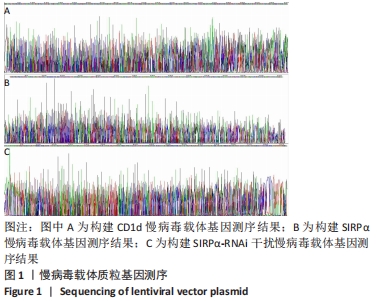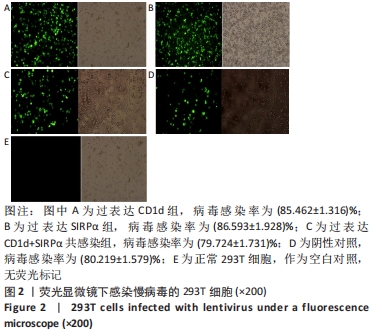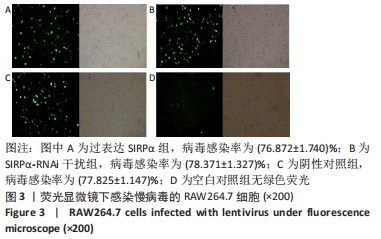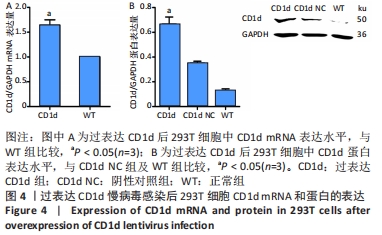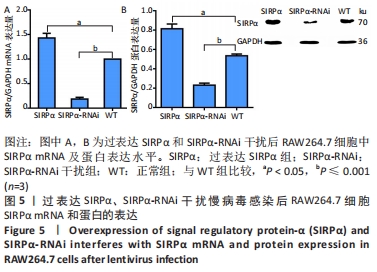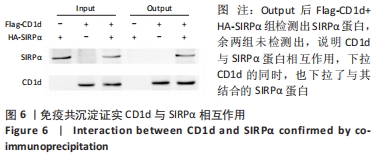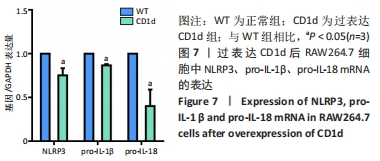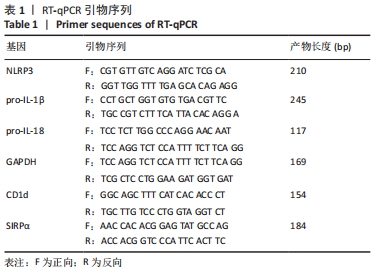[1] KELLEY N, JELTEMA D, DUAN Y, et al. The NLRP3 Inflammasome: An Overview of Mechanisms of Activation and Regulation. Int J Mol Sci. 2019;20(13):3328.
[2] ZHANG T, DU H, FENG S, et al. NLRP3/ASC/Caspase-1 axis and serine protease activity are involved in neutrophil IL-1β processing during Streptococcus pneumoniae infection. Biochem Biophys Res Commun. 2019;513(3):675-680.
[3] THEOFANI E, SEMITEKOLOU M, MORIANOS I, et al. Targeting NLRP3 Inflammasome Activation in Severe Asthma. J Clin Med. 2019;8(10):1615.
[4] YAO ST, CAO F, CHEN JL, et al. NLRP3 is Required for Complement-Mediated Caspase-1 and IL-1beta Activation in ICH. J Mol Neurosci. 2017;61(3):385-395.
[5] ZHEN Y, ZHANG H. NLRP3 Inflammasome and Inflammatory Bowel Disease. Front Immunol. 2019;10:276.
[6] GUO S, YANG C, DIAO B, et al. The NLRP3 Inflammasome and IL-1beta Accelerate Immunologically Mediated Pathology in Experimental Viral Fulminant Hepatitis. PLoS Pathog. 2015;11(9):e1005155.
[7] MELUM E, JIANG X, BAKER KD, et al. Control of CD1d-restricted antigen presentation and inflammation by sphingomyelin. Nat Immunol. 2019;20(12):1644-1655.
[8] INUKI S, HIRATA N, KASHIWABARA E, et al. Polar functional group-containing glycolipid CD1d ligands modulate cytokine-biasing responses and prevent experimental colitis. Sci Rep. 2020;10(1):15766.
[9] LEE C, HONG SN, KIM YH. A glycolipid adjuvant, 7DW8-5, provides a protective effect against colonic inflammation in mice by the recruitment of CD1d-restricted natural killer T cells. Intest Res. 2020;18(4):402-411.
[10] CUI S, WANG C, BAI W, et al. CD1d1 intrinsic signaling in macrophages controls NLRP3 inflammasome expression during inflammation. Sci Adv. 2020;6(43): eaaz7290.
[11] BARCLAY AN, BROWN MH. The SIRP family of receptors and immune regulation. Nat Rev Immunol. 2006;6(6):457-464.
[12] DE VOS AF, VAN DER POLL T. SIRP-α instructs alveolar macrophages to stop eating after pneumonia. Nat Immunol. 2020;21(6):601-603.
[13] ZHANG W, HUANG Q, XIAO W, et al. Advances in Anti-Tumor Treatments Targeting the CD47/SIRPalpha Axis. Front Immunol. 2020;11:18.
[14] LOGTENBERG MEW, SCHEEREN FA, SCHUMACHER TN. The CD47-SIRPalpha Immune Checkpoint. Immunity. 2020;52(5):742-752.
[15] VEILLETTE A, TANG Z. Signaling Regulatory Protein (SIRP)α-CD47 Blockade Joins the Ranks of Immune Checkpoint Inhibition. J Clin Oncol. 2019;37(12):1012-1014.
[16] HE Y, ZENG MY, YANG D, et al. NEK7 is an essential mediator of NLRP3 activation downstream of potassium efflux. Nature. 2016;530(7590):354-357.
[17] BRIARD B, FONTAINE T, SAMIR P, et al. Galactosaminogalactan activates the inflammasome to provide host protection. Nature. 2020;588(7839):688-692.
[18] MAGUPALLI VG, NEGRO R, TIAN Y, et al. HDAC6 mediates an aggresome-like mechanism for NLRP3 and pyrin inflammasome activation. Science. 2020; 369(6510):eaas8995.
[19] YOUM YH, NGUYEN KY, GRANT RW, et al. The ketone metabolite β-hydroxybutyrate blocks NLRP3 inflammasome-mediated inflammatory disease. Nat Med. 2015;21(3):263-269.
[20] CAMILLI G, BOHM M, PIFFER AC, et al. β-Glucan-induced reprogramming of human macrophages inhibits NLRP3 inflammasome activation in cryopyrinopathies. J Clin Invest. 2020;130(9):4561-4573.
[21] YU X, LAN P, HOU X, et al. HBV inhibits LPS-induced NLRP3 inflammasome activation and IL-1β production via suppressing the NF-κB pathway and ROS production. J Hepatol. 2017;66(4):693-702.
[22] WARD R, LI W, ABDUL Y, et al. NLRP3 inflammasome inhibition with MCC950 improves diabetes-mediated cognitive impairment and vasoneuronal remodeling after ischemia. Pharmacol Res. 2019;142:237-250.
[23] LIU D, CHEN C, WANG D, et al. Effect of sericin on the p38MAPK signaling pathway and NLRP3 inflammasome in the kidney of type 2 diabetic rats. Exp Ther Med. 2020;20(6):267.
[24] SHAO BZ, XU ZQ, HAN BZ, et al. NLRP3 inflammasome and its inhibitors: a review. Front Pharmacol. 2015;6:262.
[25] RAMESH A, KUMAR S, NANDI D, et al. CSF1R- and SHP2-Inhibitor-Loaded Nanoparticles Enhance Cytotoxic Activity and Phagocytosis in Tumor-Associated Macrophages. Adv Mater. 2019;31(51):e1904364.
[26] RAY M, LEE YW, HARDIE J, et al. CRISPRed Macrophages for Cell-Based Cancer Immunotherapy. Bioconjug Chem. 2018;29(2):445-450.
[27] HAYAT SMG, BIANCONI V, PIRRO M, et al. CD47: role in the immune system and application to cancer therapy. Cell Oncol (Dordr). 2020;43(1):19-30.
[28] ORONSKY B, CARTER C, REID T, et al. Just eat it: A review of CD47 and SIRP-alpha antagonism. Semin Oncol. 2020;47(2-3):117-124.
[29] HUANG CY, YE ZH, HUANG MY, et al. Regulation of CD47 expression in cancer cells. Transl Oncol. 2020;13(12):100862.
[30] KONG XN, YAN HX, CHEN L, et al. LPS-induced down-regulation of signal regulatory protein {alpha} contributes to innate immune activation in macrophages. J Exp Med. 2007;204(11):2719-2731.
[31] LI XJ, GOODWIN CB, NABINGER SC, et al. Protein-tyrosine phosphatase Shp2 positively regulates macrophage oxidative burst. J Biol Chem. 2015;290(7):3894-3909.
[32] LI X, ZHOU W, LIANG Y, et al. The Immunotherapeutic Effect of SIRPα-Silenced DCs against Cervical Cancer. J Immunol Res. 2020;2020:1705187.
[33] KRISHNAN SM, SOBEY CG, LATZ E, et al. IL-1beta and IL-18: inflammatory markers or mediators of hypertension? Br J Pharmacol. 2014;171(24):5589-5602.
[34] HARA K, SENGA T, BISWAS MH, et al. Recovery of anoikis in Src-transformed cells and human breast carcinoma cells by restoration of the SIRP α1/SHP-2 signaling system. Cancer Res. 2011;71(4):1229-1234.
[35] BRUTKIEWICZ RR, YUNES-MEDINA L, Liu J. Immune evasion of the CD1d/NKT cell axis. Curr Opin Immunol. 2018;52:87-92.
[36] SHYANTI RK, SEHRAWAT A, SINGH SV, et al. Zerumbone modulates CD1d expression and lipid antigen presentation pathway in breast cancer cells. Toxicol In Vitro. 2017;44:74-84.
[37] NI C, WU P, WU X, et al. Thymosin alpha1 enhanced cytotoxicity of iNKT cells against colon cancer via upregulating CD1d expression. Cancer Lett. 2015;356(2 Pt B):579-588.
[38] KOHLGRUBER AC, DONADO CA, LAMARCHE NM, et al. Activation strategies for invariant natural killer T cells. Immunogenetics. 2016;68(8):649-663.
|

